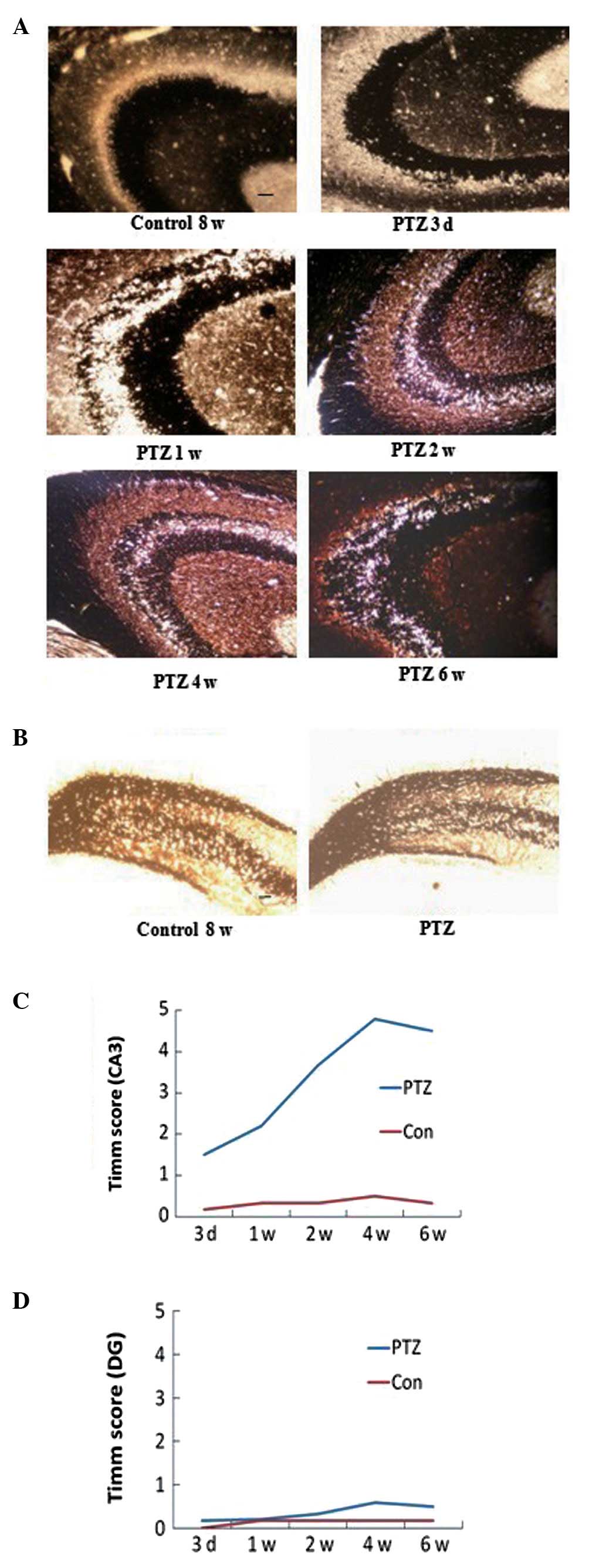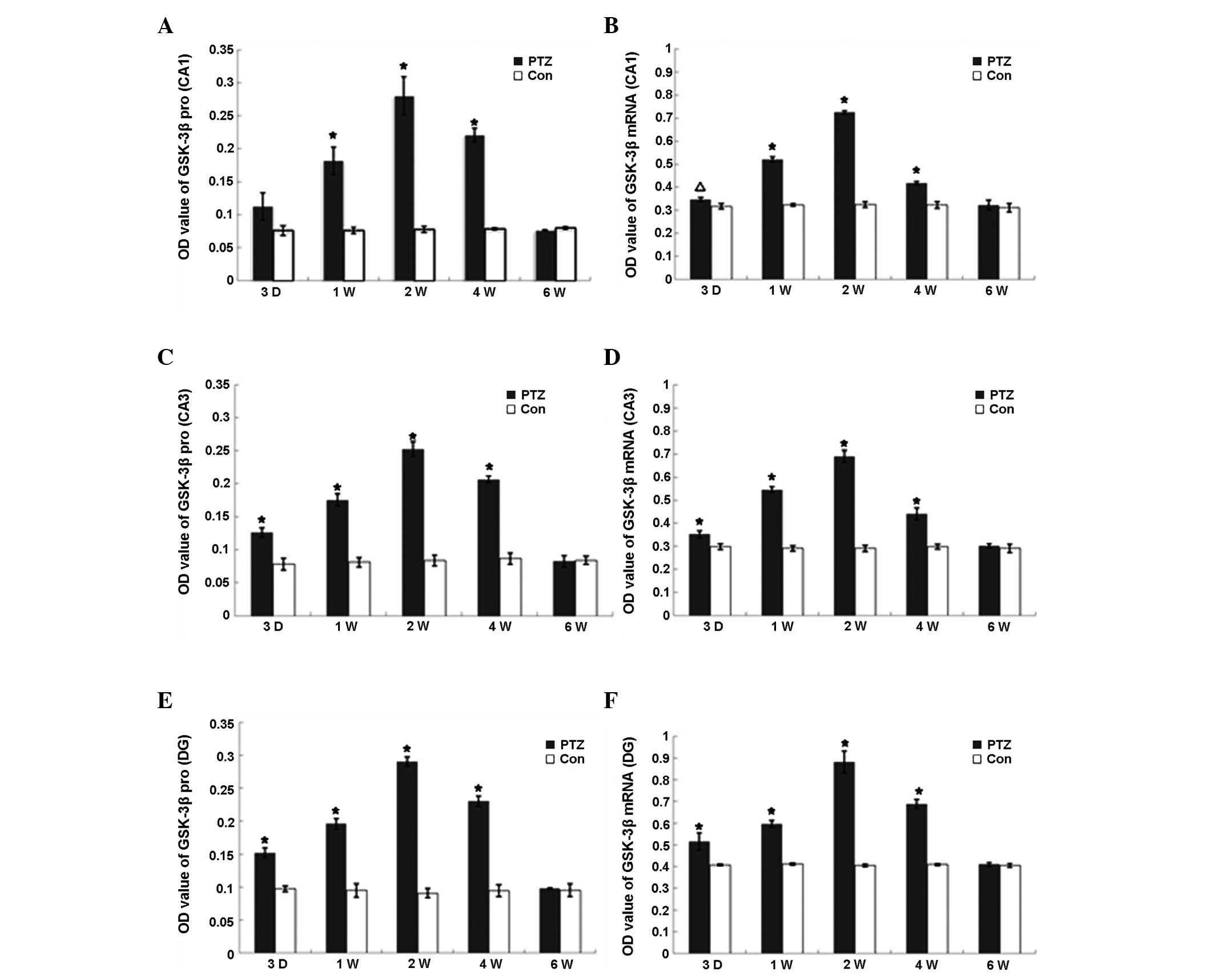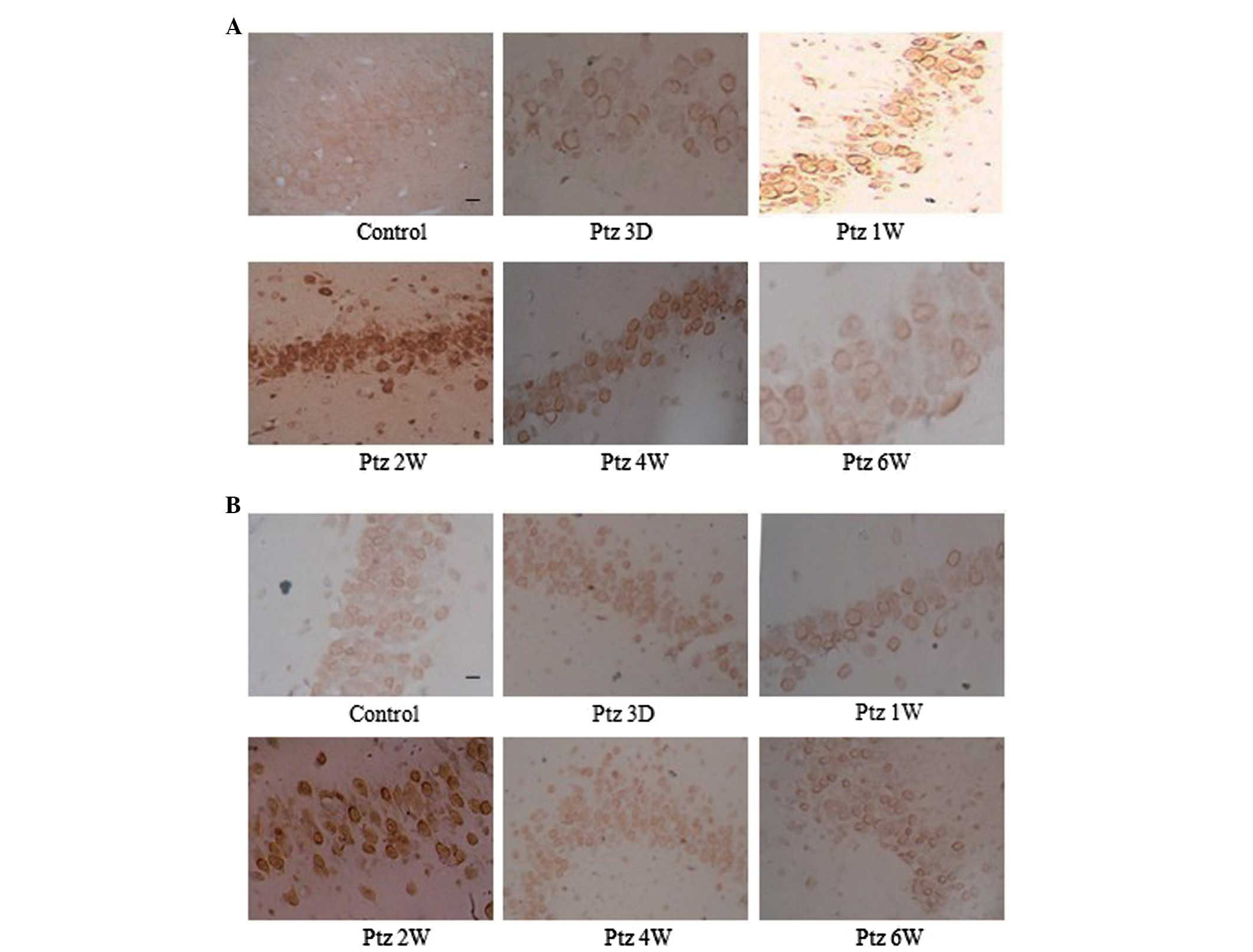|
1
|
Kuo LW, Lee CY, Chen JH, Wedeen VJ, Chen
CC, Liou HH and Tseng WY: Mossy fiber sprouting in
pilocarpine-induced status epilepticus rat hippocampus: a
correlative study of diffusion spectrum imaging and histology.
NeuroImage. 41:789–800. 2008. View Article : Google Scholar : PubMed/NCBI
|
|
2
|
Andrade-Valença LP, Valença MM, Velasco
TR, Carlotti CG Jr, Assirati JA, Galvis-Alonso OY, Neder L, Cendes
F and Leite JP: Mesial temporal lobe epilepsy clinical and
neuropathologic findings of familial and sporadic forms. Epilepsia.
6:1046–1054. 2008.PubMed/NCBI
|
|
3
|
Sutula TP and Dudek FE: Unmasking
recurrent excitation generated by mossy fiber sprouting in the
epileptic dentate gyrus: an emergent property of a complex system.
Prog Brain Res. 163:541–563. 2007. View Article : Google Scholar
|
|
4
|
Longo BM and Mello LE: Effect of long-term
spontaneous recurrent seizures or reinduction of status epilepticus
on the development of supragranular mossy fiber sprouting. Epilepsy
Res. 36:233–241. 1999. View Article : Google Scholar : PubMed/NCBI
|
|
5
|
Johnson GV and Stoothoff WH: Tau
phosphorylation in neuronal cell function and dysfunction. J Cell
Sci. 117:5721–5729. 2004. View Article : Google Scholar : PubMed/NCBI
|
|
6
|
Merrick SE, Demoise DC and Lee VM:
Site-specific dephosphorylation of tau protein at Ser202/Thr205 in
response to microtubule depolymerization in cultured human neurons
involves protein phosphatase 2A. J Biol Chem. 271:5589–5594. 1996.
View Article : Google Scholar
|
|
7
|
Pollard H, Khrestchatisky M, Moreau J,
Ben-Ari Y and Represa A: Correlation between reactive sprouting and
microtubule protein expression in epileptic hippocampus.
Neuroscience. 61:773–787. 1994. View Article : Google Scholar : PubMed/NCBI
|
|
8
|
Palmio J, Suhonen J, Keränen T, Hulkkonen
J, Peltola J and Pirttilä T: Cerebrospinal fluid tau as a marker of
neuronal damage after epileptic seizure. Seizure. 18:474–477. 2009.
View Article : Google Scholar : PubMed/NCBI
|
|
9
|
Plattner F, Angelo M and Giese KP: The
roles of cyclin-dependent kinase 5 and glycogen synthase kinase 3
in tau hyperphosphorylation. J Biol Chem. 281:25457–25465. 2006.
View Article : Google Scholar : PubMed/NCBI
|
|
10
|
Yeste-Velasco M, Folch J, Trullàs R, Abad
MA, Enguita M, Pallàs M and Camins A: Glycogen synthase kinase-3 is
involved in the regulation of the cell cycle in cerebellar granule
cells. Neuropharmacology. 53:295–307. 2007. View Article : Google Scholar : PubMed/NCBI
|
|
11
|
Zhou FQ and Snider WD: Cell biology.
GSK-3β and microtubule assembly in axons. Science. 308:211–214.
2005.
|
|
12
|
National Institues of Health. Guide for
the care and use of laboratory animals. The National Academies
Press; Washington, D.C: 1996
|
|
13
|
Racine RJ: Modification of seizure
activity by electrical stimulation. II Motor seizure
Electroencephalogr. Clin Neurophysiol. 32:281–294. 1974. View Article : Google Scholar : PubMed/NCBI
|
|
14
|
Sogawa Y, Monokoshi M, Silveira DC, Cha
BH, Cilio MR, McCabe BK, Liu X, Hu Y and Holmes GL: Timing of
cognitive deficits following neonatal seizures: relationship to
histological changes in the hippocampus. Brain Res Dev Brain Res.
131:73–83. 2001. View Article : Google Scholar
|
|
15
|
Pierce JP, Melton J, Punsoni M, McCloskey
DP and Scharfman HE: Mossy fibers are the primary source of
afferent input to ectopic granule cells that are born after
pilocarpine-induced seizures. Exp Neurol. 196:316–331.
2005.PubMed/NCBI
|
|
16
|
Holmes GL, Sarkisian M, Ben-Ari Y and
Chevassus-Au-Louis N: Mossy fiber sprouting after recurrent
seizures during early development in rats. J Comp Neurol.
404:537–553. 1999. View Article : Google Scholar : PubMed/NCBI
|
|
17
|
Cross DJ and Cavazos JE: Synaptic
reorganization in subiculum and CA3 after early-life status
epilepticus in the kainic acid rat model. Epilepsy Res. 73:156–165.
2007. View Article : Google Scholar : PubMed/NCBI
|
|
18
|
Tian FF, Zeng C, Guo TH, Chen Y, Chen JM,
Ma YF, Fang J, Cai XF, Li FR, Wang XH, et al: Mossy fiber
sprouting, hippocampal damage and spontaneous recurrent seizures in
pentylenetetrazole kindling rat model. Acta Neurol Belg.
109:298–304. 2009.PubMed/NCBI
|
|
19
|
Jiang H, Guo W, Liang X and Rao Y: Both
the establishment and the maintenance of neuronal polarity require
active mechanisms: critical roles of GSK-3β and its upstream
regulators. Cell. 120:123–135. 2005.PubMed/NCBI
|
|
20
|
Sen A, Thom M, Martinian L, Harding B,
Cross JH, Nikolic M and Sisodiya SM: Pathological tau tangles
localize to focal cortical dysplasia in older patients. Epilepsia.
48:1447–1454. 2007. View Article : Google Scholar : PubMed/NCBI
|
|
21
|
Tian FF, Zeng C, Ma YF, Guo TH, Chen JM,
Chen Y, Cai XF, Li FR, Wang XH, Huang WJ and Wang YZ: Potential
roles of Cdk5/p35 and tau protein in hippocampal mossy fiber
sprouting in the PTZ kindling model. Clin Lab. 56:127–136.
2010.PubMed/NCBI
|
|
22
|
Linseman DA, Butts BD, Precht TA, Phelps
RA, Le SS, Laessig TA, Bouchard RJ, Florez-McClure ML and
Heidenreich KA: Glycogen synthase kinase-3beta phosphorylates Bax
and promotes its mitochondrial localization during neuronal
apoptosis. J Neurosci. 24:9993–10002. 2004. View Article : Google Scholar : PubMed/NCBI
|
|
23
|
Chen L, Wei Y, Wang X and He R:
D-Ribosylated Tau forms globular aggregates with high cytotoxicity.
Cell Mol Life Sci. 66:2559–2571. 2009. View Article : Google Scholar : PubMed/NCBI
|

















